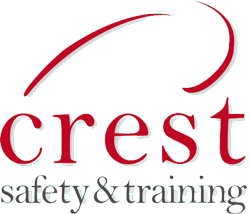Often when delivering health and safety training to people working in the HR field I hear ‘What’s in it for me?’
In this day and age, the link between these two professions could not be more firmly bonded.
In essence, HR involves people and systems to manage people. Is this not also the realm of health and safety?
In the WHS field we have made great inroads in to the management of our physical environment through both hard controls and systems. The next step forward is managing behavioural aspects in the workplace.
It is in the management of these behavioural aspects where we often see HR and WHS professionals working in the same space. WorkSafe WA are using the terminology ‘hazardous workplace behaviour ‘ to categorise bullying, harassment, aggression, discrimination and the like. This clearly shows the link between these types of conduct and the risk they place to health and safety in the workplace.
The tragic case of Brodie Panlock emphasises this. 19 year old Brodie Panlock took her own life in 2006 after being subjected to serious and ongoing workplace bullying. On 8 February 2010, four of her co-workers were fined a total of $335,000 for repeatedly bullying, or allowing bullying to occur. WorkSafe Victoria prosecuted Brodie’s employer, its director and the co-workers who carried out the bullying, which resulted in the parties being convicted and fined under the Occupational Health & Safety Act 2004 (Vic). Whilst the case was tried under OHS legislation it resulted in legislative reforms to the Crimes Amendment (Bullying) Act 2011 including a maximum penalty for stalking of 10 years imprisonment – commonly referred to as ‘Brodies Law’
I recently attended a WorkSafe WA workshop on ‘Harmonious workplaces – Preventing and managing unhealthy workplace behaviour’. This provided some excellent information and resources on how to identify, prevent and manage hazardous workplace behaviour. They are continuing to run these workshops this year. A important point made was that in investigating claims of hazardous behaviour, WorkSafe WA look for safe systems that identify and control hazards, the consistent application of procedures; and the provision of information and training to employees in these systems. These are key areas for investigating any workplace incident, the process is the same.
As stated, the paths between these HR and WHS professionals usually cross in managing hazardous workplace behaviour. However, more often I see these two roles being combined – ‘HR and WHS Manager’. This is particularly the case in smaller companies and organisations downsizing.
So when people working in the HR field ask “WHS – what’s in it for me?, apart from the obvious connection through managing people and their behaviour – it could very well become part of your core role one day!
